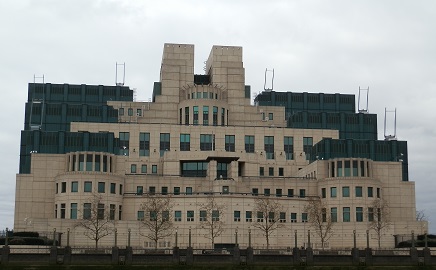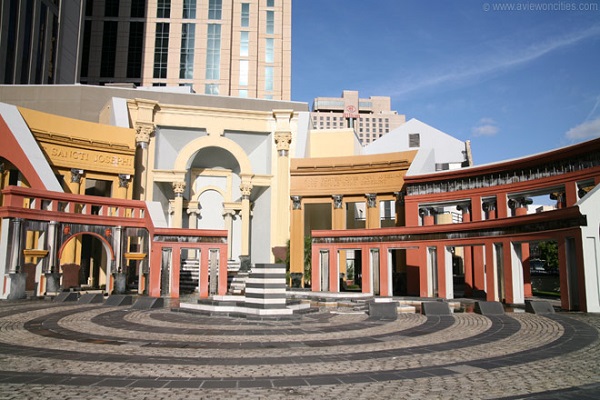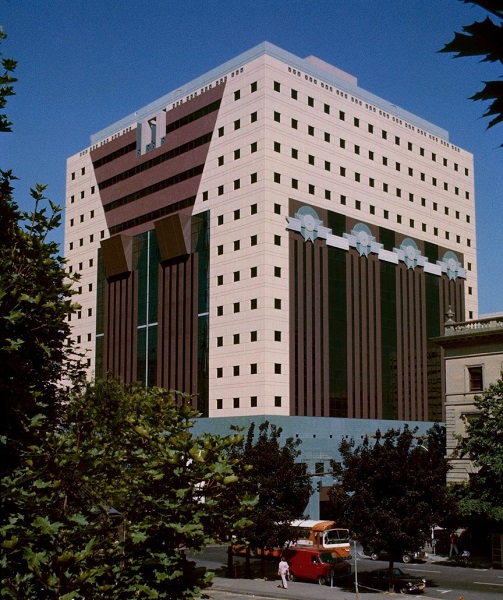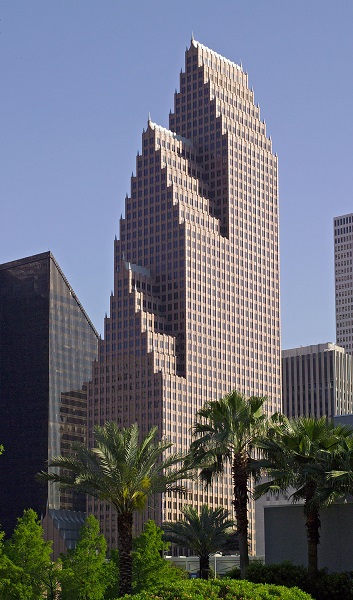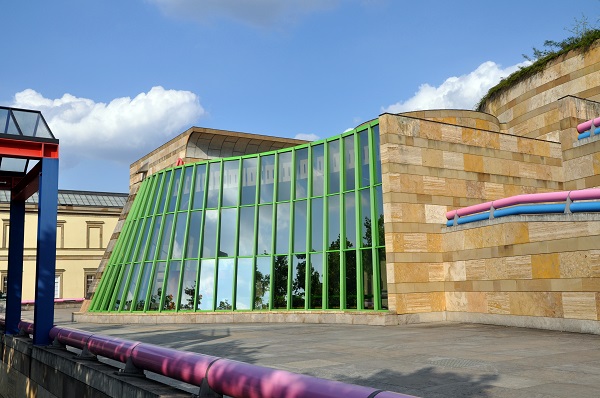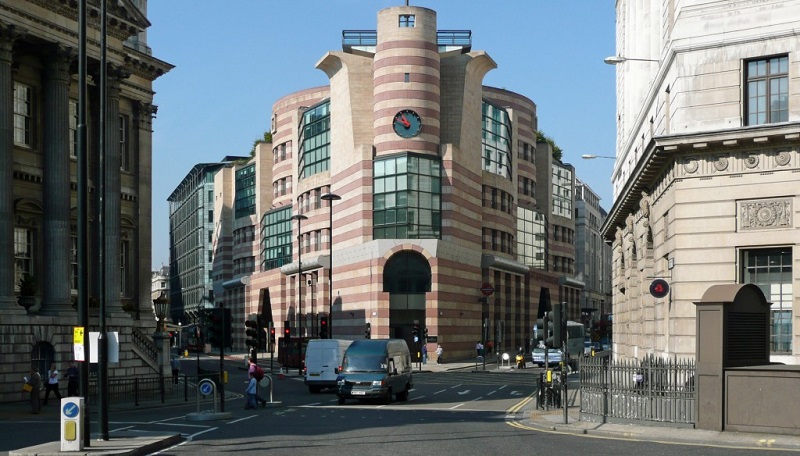Postmodern architecture
Postmodern architecture, also known as postmodernism (or ‘pomo’), is an architectural style that emerged in the late-1960s as a reaction against modernism.
Modernist architecture had faced increasing criticism for its rigid doctrines, uniformity and perceived lack of local and cultural context. There were also those who derided the modernism of Le Corbusier and Ludwig Mies van der Rohe for being too bleak, formal and austere.
The failure of building methods and materials, such as the collapse of Ronan Point in 1968, and the gradual deterioration of once-‘utopian’ housing estates, also contributed to the backlash against modernism.
In 1966, the architect and theorist Robert Venturi published ‘Complexity and Contradiction in Architecture’ the catalyst for the postmodern movement. Venturi argued that the ancient cities of Rome spoke in historical layers and vivid juxtapositions rather than one homogenous voice. He also claimed that buildings, as well as being designed objects, were feats of placemaking and should seek to accommodate local conditions of neighbourhood and public behaviour; as individual and rich as the building occupants themselves.
In practice, postmodern architecture moved away from the rigid formalities of modernism and began to incorporate stylistic references that were often playful and symbolic, using techniques such as shape, colour and trompe l’oeil; applying elements and structural forms from classical architecture to modern designs.
Postmodern architecture tends to be characterised by its highly decorative, whimsical and kitsch aesethetic; above all refusing to draw inspiration solely from a single source, and often focussing on form over function. It also has a metaphoric nature. This refers to structural designs that are based on forms which are non-architectural. A well-known example is the Lotus temple of New Delhi which is based on the shape of a lotus flower; and the Sydney Opera House which is inspired by the sails of ships.
Architects sought to incorporate design elements from multiple styles, breaking down the boundaries between them. Accordingly, postmodernism is often praised for its eclectic and joyful style.
However, it has also faced its fair share of criticism, with many deriding it as ugly, superficial, derivative, and, in the words of Fredric Jameson, ‘the cultural logic of late capitalism’. Indeed, the huge urban expansion of Dubai has led to it being referred to as the ‘global capital of postmodernism’.
Postmodernism flourished during the 1980s and 1990s, sub-dividing into other styles such as high-tech, deconstructivism, and neo-classicism. Leading architects of the movement included; Philip Johnson, Charles Moore, Frank Gehry, Michael Graves, Terry Farrell and James Stirling.
Notable postmodern buildings include:
- SIS Building by Terry Farrell [see top image].
- Piazza d’Italia by Charles Moore.
- Portland Building by Michael Graves.
- Bank of America Center, Houston by Philip Johnson.
- Neue Staatsgalerie by James Stirling.
- No.1 Poultry by James Stirling.
[edit] Related articles on Designing Buildings Wiki
Featured articles and news
The UK's Modern Industrial Strategy: A 10 year plan
Previous consultation criticism, current key elements and general support with some persisting reservations.
Building Safety Regulator reforms
New roles, new staff and a new fast track service pave the way for a single construction regulator.
Architectural Technologist CPDs and Communications
CIAT CPD… and how you can do it!
Cooling centres and cool spaces
Managing extreme heat in cities by directing the public to places for heat stress relief and water sources.
Winter gardens: A brief history and warm variations
Extending the season with glass in different forms and terms.
Restoring Great Yarmouth's Winter Gardens
Transforming one of the least sustainable constructions imaginable.
Construction Skills Mission Board launch sector drive
Newly formed government and industry collaboration set strategy for recruiting an additional 100,000 construction workers a year.
New Architects Code comes into effect in September 2025
ARB Architects Code of Conduct and Practice available with ongoing consultation regarding guidance.
Welsh Skills Body (Medr) launches ambitious plan
The new skills body brings together funding and regulation of tertiary education and research for the devolved nation.
Paul Gandy FCIOB announced as next CIOB President
Former Tilbury Douglas CEO takes helm.
UK Infrastructure: A 10 Year Strategy. In brief with reactions
With the National Infrastructure and Service Transformation Authority (NISTA).
Ebenezer Howard: inventor of the garden city. Book review.
The Grenfell Tower fire, eight years on
A time to pause and reflect as Dubai tower block fire reported just before anniversary.
Airtightness Topic Guide BSRIA TG 27/2025
Explaining the basics of airtightness, what it is, why it's important, when it's required and how it's carried out.
Construction contract awards hit lowest point of 2025
Plummeting for second consecutive month, intensifying concerns for housing and infrastructure goals.
Understanding Mental Health in the Built Environment 2025
Examining the state of mental health in construction, shedding light on levels of stress, anxiety and depression.






